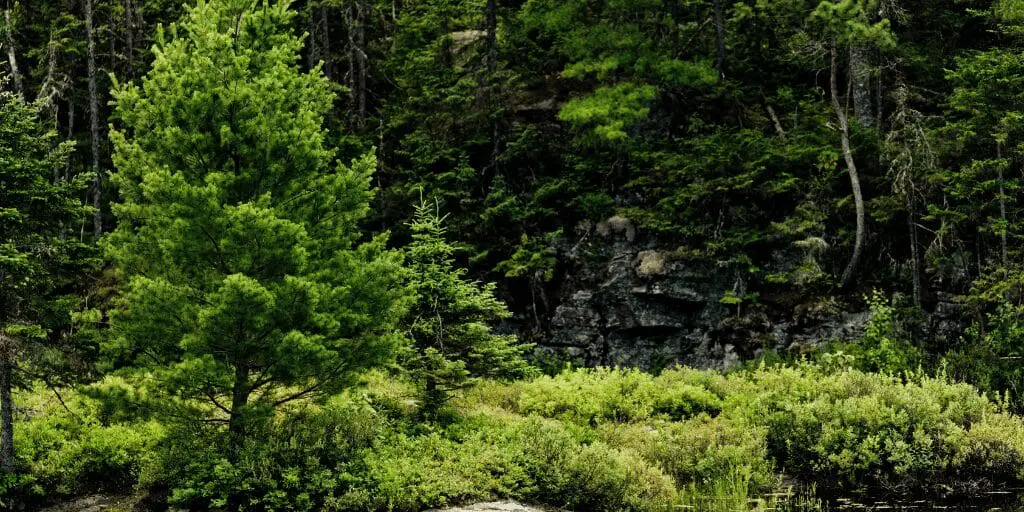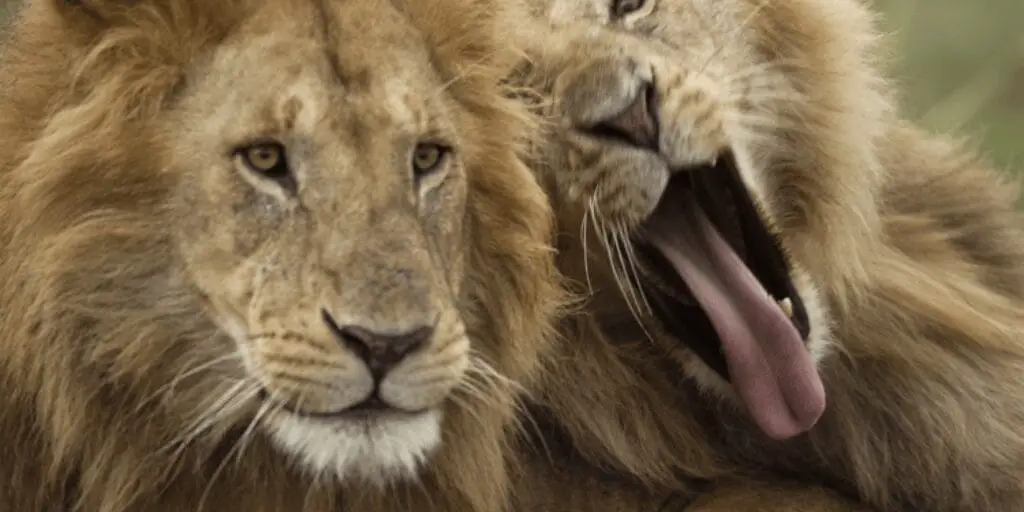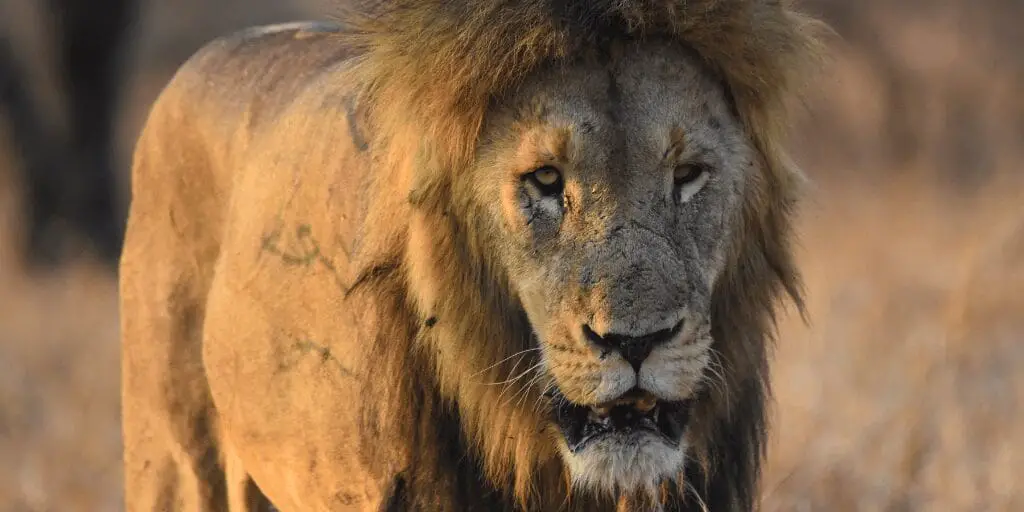Forests cover over 31% of the world’s land area and come in incredibly diverse forms – from icy arctic forests to steamy tropical jungles. These complex ecosystems support an incredible array of life, housing some of the most spectacular species on Earth.
However, many of these wondrous creatures and their forest homes are now seriously threatened by issues like habitat loss and climate change.
In this article, we will take you on an amazing journey through several major forest types around the world to uncover some of the most remarkable wildlife inhabiting them.
Explore Stunning Forest Wildlife
Forests around the world are filled with an incredible diversity of wildlife uniquely adapted to thrive in these wooded wonderlands.
Ranging from tiny shrews scurrying across the forest floor to massive moose plowing through the brush, these amazing animals fill vital roles in maintaining balanced forest ecosystems.
Iconic species like deer, bears, foxes, squirrels, and songbirds are found in forests on nearly every continent, yet each geographic region has its own special native species.
Other forest creatures like primates, big cats, parrots, frogs, and insects create a tropical cacophony in rainforests. From secretive lynx stalking their prey under boreal boughs to colorful toucans tending nests in rainforest canopies, forests offer a bounty of shelters and food sources.
Boreal Forest

The boreal forest is home to iconic wildlife like the American marten, boreal woodland caribou, Canada lynx, snowshoe hare, wood frog, brown bear, moose, beaver, great gray owl, great horned owl, and black-capped chickadee. These species boast thick fur, plumage, and camouflage to thrive in the frigid habitat.
However, climate change allows southern species to move northward, disrupting the boreal ecosystem. Earlier spring thaws also desynchronize food availability.
Resource extraction fragments contiguous old-growth forest, endangering wide-roaming caribou. Expanding road networks provide access for hunters and trappers, further threatening struggling carnivores.
Protecting the remaining intact boreal forest is vital for climate resilience and safeguarding vulnerable species. Sustainable development and responsible hunting practices are also needed to conserve boreal biodiversity.
This irreplaceable subarctic wonderland and its unique, specially adapted wildlife require proactive conservation efforts in the face of escalating threats.
Daintree Rainforest
Daintree Rainforest in Australia – home to an extraordinary variety of unique wildlife found nowhere else on Earth. Ranging from possums to crocodiles, this rainforest has endemic species like the spectacular southern cassowary, vibrant Boyd’s forest dragon, elusive Lumholtz’s tree kangaroo, and rare musky rat kangaroo.
Soaring high above the forest canopy, endangered Gouldian finches flaunt their jewel-toned plumage while giant fruit bats, called flying foxes, feast under the cover of night.
However, rampant development in northern Australia continues to destroy the world’s oldest surviving rainforest. As roads, settlements, and agriculture encroach further into the region, they disrupt habitats, degrade water quality in freshwater ecosystems, and disturb sensitive species struggling to endure the added stresses.
Protecting the Daintree’s outstanding biodiversity depends first and foremost on preserving contiguous forests, with sustainable development a second priority.
This reserve houses some of the planet’s most ancient plant and animal lineages – living treasures tracing back to when Australia was still connected to Antarctica. Losing them would imperil invaluable genetic diversity.
Serengeti

Serengeti in Africa – arguably the world’s most famous habitat renowned for its annual Great Migration featuring over a million animals plus large herds of zebras and gazelles.
Beyond these grazing hordes, the Serengeti is home to Africa’s densest populations of lions, elephants, hippos, cheetahs, and Cape buffalo along with endangered black rhinos and African wild dogs.
Nile crocodiles lurk along riverbanks while a feast of vultures, eagles, and storks soar on thermal winds rising above the sea of grasses.
However, Serengeti wildlife faces increasing threats from poachers supplying growing illegal wildlife trade markets with elephant ivory, rhino horns, and lion bones. Meanwhile, agricultural expansion increasingly fragments critical habitats and migratory corridors.
As human settlements spread, they cut off access to water sources and breeding grounds. Protecting the Serengeti’s unparalleled biodiversity requires tackling poaching through law enforcement and anti-trafficking measures while limiting habitat encroachment through conservation planning around protected areas.
Global cooperation can help fund and equip anti-poaching patrols to rein in the rampant illegal wildlife trade devastating Africa’s iconic megafauna populations.
Smoky Mountains
The Great Smoky Mountains are located on the border of North Carolina and Tennessee. Roaming these ancient peaks, nearly extinct eastern cougars still stalk deer through shadowy glens while black bears forage on berries beneath fragrant fir and pine boughs.
Bull elk echo their haunting calls across high-elevation meadows each autumn. As darkness falls, a spectacle of over 19 species of fireflies blink in a magical courtship display along more than 200 mountain streams.
However, America’s most biodiverse national park faces increasing threats as climate change shifts species ranges, development fragments key habitats and pollution degrades aquatic ecosystems that fireflies and other species depend on.
As the Smokies’ isolation heightens extinction risks, conservation efforts focus on enlarging protected areas, improving habitat connectivity through wildlife corridors, and restoring damaged ecosystems.
Air and water quality monitoring helps track pollution levels while public education aims to build appreciation for the park’s unparalleled diversity and spur support for its preservation.
Protecting southern Appalachian forest wildlife for future generations demands mitigating multiple expanding threats across a landscape already under enormous pressure.
Taiga Biome

Transitioning to the great northern taiga forest, we discover the vital habitat for iconic wildlife like brown bears, caribou, Siberian tigers, beavers, gray wolves, great gray owls, salmon, and boreal chorus frogs.
This subarctic wonderland covers Alaska, Canada, Scandinavia, and Russia in extensive tracts of spruce, pine, fir, larches, and birch.
Under the endless green forest, brown bears feast on juicy salmon battling upstream to spawn while pack-hunting wolves give chase to massive herds of caribou migrating above the treeline.
Solitary Siberian tigers patrol vast territories up to 600 miles wide as the apex predators influence prey numbers and behavior across the taiga forest ecosystem.
However, these long-lived species require extensive untouched habitat to maintain viable populations. Expanding oil drilling, gas pipelines, roads, rail lines, and hydroelectric dams increasingly carve up and degrade the contiguous forest these nomadic animals rely on.
Meanwhile, longer summers and milder winters due to climate change allow southern species like deer to spread north and transmit parasites to native fauna.
Protecting taiga biodiversity requires balancing the preservation of old-growth forests and intact watersheds with strategic development planning to minimize fragmentation.
Maintaining connections across the ecosystem helps species shift their distributions as climate change alters habitats. Safeguarding the taiga’s originating wildlife keeps this primal wilderness ecosystem thriving across the northern latitudes.
Swamp
Swamps have a variety of specially adapted wildlife like tiny pygmy sunfish, camouflaged softshell turtles, sneaky alligator snappers ambushing prey, sleepy-eyed American alligators basking on banks, and long water snakes gliding through murky depths.
Strange bird species stake out marshy corners while rabbits hide amongst palmetto thickets. However, expanding development drains critical wetlands for conversion into farms and suburbs. Runoff pollution turns once pristine blackwaters tannic and nutrient-fouled, degrading aquatic ecosystems.
Protecting declining southern swamp habitats and their unique wildlife requires restoring natural floodplain hydrology, enacting protections for remaining undisturbed wetlands, and managing upland development through water quality regulations.
Though easily overlooked, these swampy biomes nurture an irreplaceable diversity of plants and animals that are increasingly rare in today’s world.
Grasslands

Grasslands support iconic species like lions, elephants, zebras, rhinos, bison, hyenas, emus, swift foxes, saiga antelopes, and long-billed curlews. These specially adapted animals fill vital roles in food webs fueled by sunlight.
However, agriculture and ranching increasingly plow under native grasslands, destroying endangered populations. Livestock also displaces native species, increasing culling. Meanwhile, poaching escalates for products like ivory.
Protecting remaining grasslands and restoring degraded areas provides essential habitat and migration corridors. Coexistence models balancing ranching interests with conservation can sustain both livestock and imperiled wildlife. But action is urgent as habitat loss and trafficking ravage grassland biodiversity.
Forest Animals
From nimble spider monkeys swinging through rainforest canopies to mighty brown bears lumbering through North American forests, forests provide vital habitat for many globally endangered animals.
Secretive lynx and raccoons hunt under the cover of night while opportunistic deer forage trails underneath the shady canopy.
Higher up, great horned owls tend nests in the tallest trees rising over the forest interior. Apex predators like jaguars patrol miles of dense rainforest per day. This lush habitat shelters specialized biodiversity while extensive root systems sequester carbon.
However, massive deforestation for agriculture and development ravages critical habitats and fragments migration corridors. Animal populations decline without protected reserves large enough to maintain genetic diversity.
Expanding roads and pipelines also increase poaching and human-wildlife conflict through greater encroachment.
Protecting forest wildlife requires designating interconnected protected areas and wildlife overpasses while also shifting logging practices to sustainable forestry emphasizing long-term ecosystem health over maximum timber yields.
Conserving sufficient habitat helps maintain balanced predator-prey relationships vital for thriving forest ecosystems worldwide.
Conclusion
Forests rank among Earth’s most valuable ecosystems, supporting over 80% of terrestrial biodiversity. These vibrant habitats provide ecosystem services like climate regulation, nutrient cycling, and flood control benefiting wildlife and humans alike.
However, development increasingly threatens endangered forest wildlife and severs vital migration routes. Safeguarding remaining old-growth forests preserves irreplaceable species like orangutans, tigers, and grizzlies while maintaining fully functioning ecosystems.
Meanwhile, restoring degraded lands could return endangered wildlife populations. Sustainably balancing conservation, logging, and agriculture protects biodiversity and local economies.
With climate change and land conversion jeopardizing so many species, maintaining forest ecosystem integrity is urgent for mitigating extinctions.
Protecting forests secures humanity’s own future through the provision of clean air, water filtration, and crop pollination. Conserving these dazzling, fragile worlds rewards us all.

